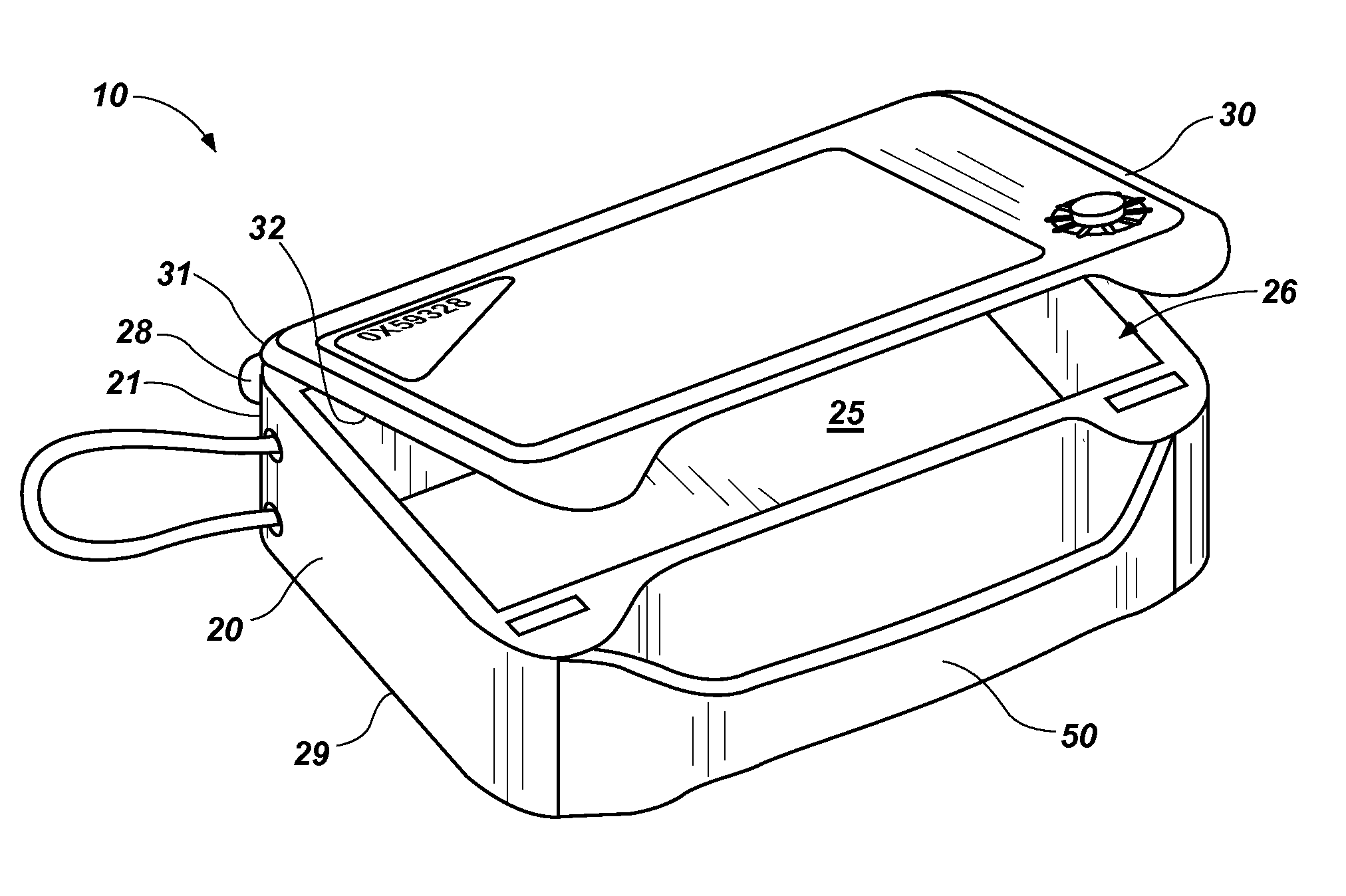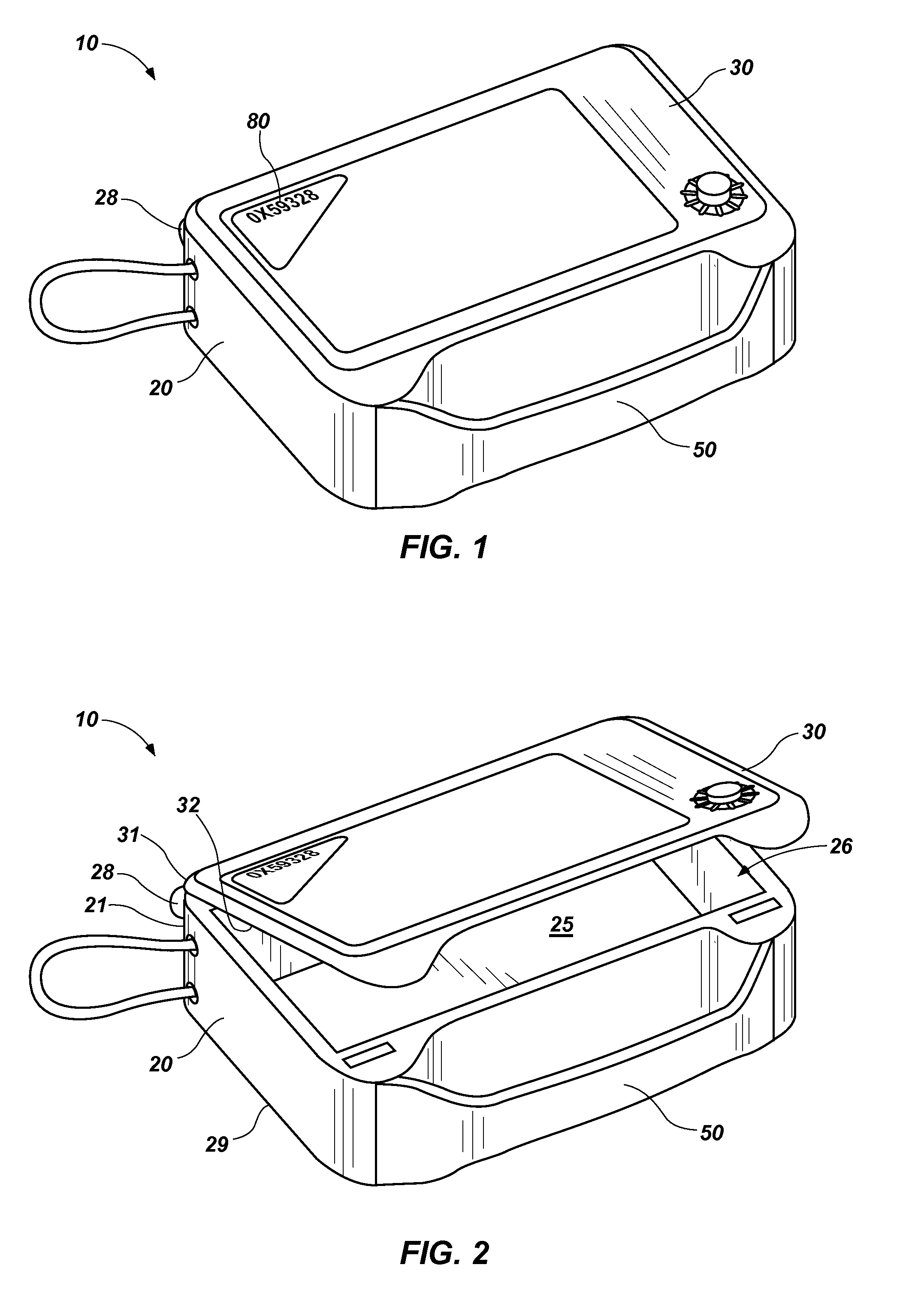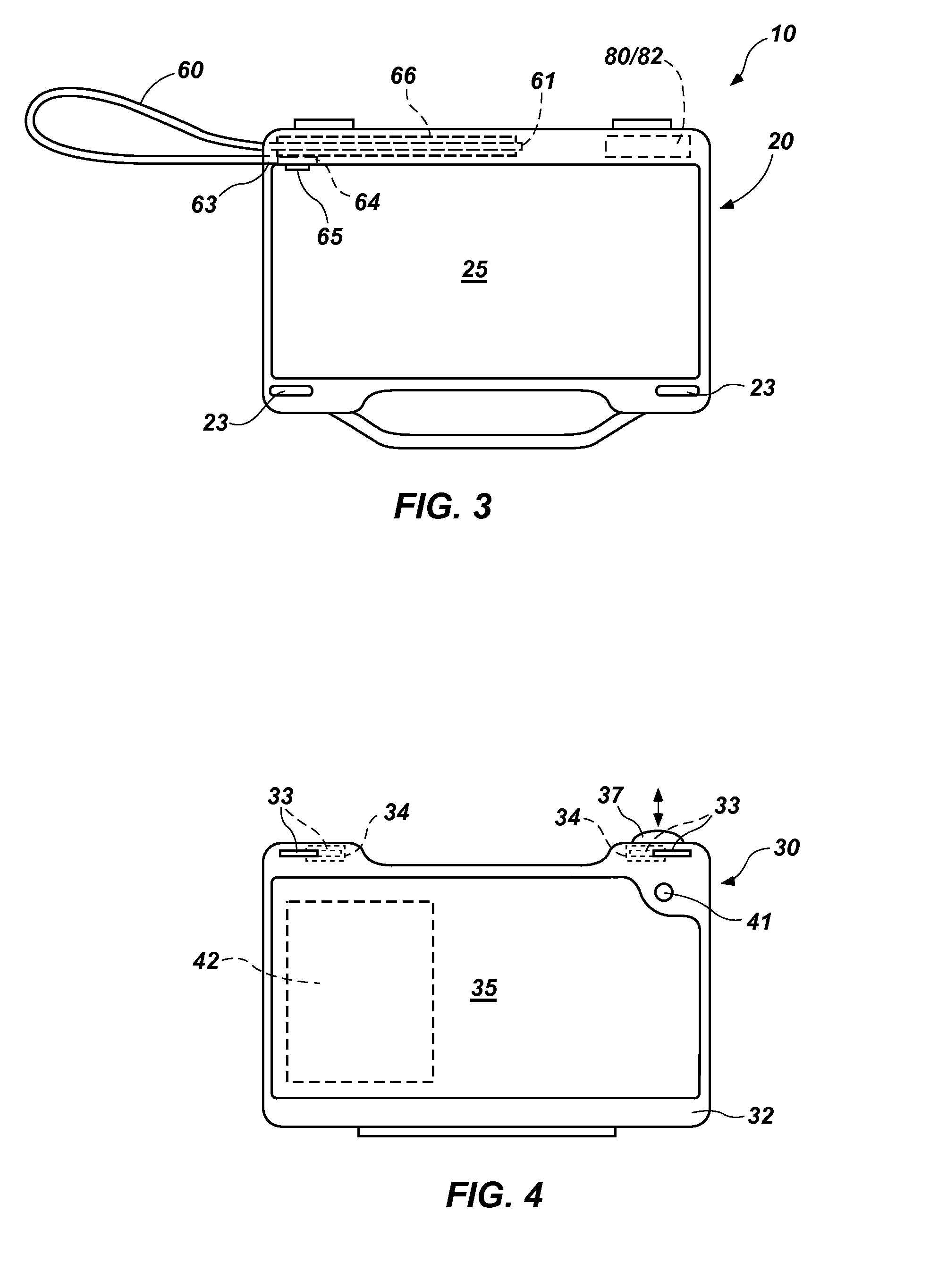Portable safe, systems and methods
a safe and portable technology, applied in the field of portable safes or lock boxes, can solve the problems of not providing the individual with a convenient access to valuable items, unable to provide security for valuable items that the guest takes outside the room, and unable to provide the individual with any security, etc., to achieve the effect of facilitating handling and/or transportation, contributing to the portability of the portable safe, and light weigh
- Summary
- Abstract
- Description
- Claims
- Application Information
AI Technical Summary
Benefits of technology
Problems solved by technology
Method used
Image
Examples
Embodiment Construction
[0028]FIGS. 1 through 8 depict an embodiment of portable safe 10. As illustrated, the portable safe 10 includes container 20, a door 30, a release mechanism 40 and a handle 50, among a variety of other elements.
[0029]As shown in FIGS. 1 and 2, the door 30 of the portable safe 10 is configured to be assembled with the container 20 of the portable safe 10. More specifically, the door 30 may be placed in a closed position over the container 20, as shown in FIG. 1, or the door 30 may be at least partially spaced apart from the container 20 in an at least partially open position, a nonlimiting example of which is shown in FIG. 2. In the illustrated embodiment, one or more hinges 28 at corresponding edges 21 and 31 of the container 20 and the door 30, respectively, may secure the edge 31 of the door 30 to its corresponding edge 21 of the container 20 and guide movement of the door 30 between its closed position and its open position. With the door 30 in the open position, an inner surface...
PUM
 Login to View More
Login to View More Abstract
Description
Claims
Application Information
 Login to View More
Login to View More - R&D
- Intellectual Property
- Life Sciences
- Materials
- Tech Scout
- Unparalleled Data Quality
- Higher Quality Content
- 60% Fewer Hallucinations
Browse by: Latest US Patents, China's latest patents, Technical Efficacy Thesaurus, Application Domain, Technology Topic, Popular Technical Reports.
© 2025 PatSnap. All rights reserved.Legal|Privacy policy|Modern Slavery Act Transparency Statement|Sitemap|About US| Contact US: help@patsnap.com



